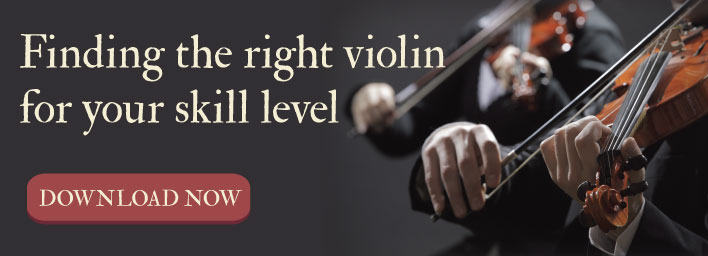The Ins And Outs Of Copying Sheet Music

Resources for classrooms can be scarce. As a teacher, you know all too well what you’re spending out-of-pocket to improve your students’ educational experience. The urge to save some money by copying sheet music is understandable. Understandable, sure – but that doesn’t mean legal.
The use of sheet music is covered by copyright law, which means misuse of sheet music can get you or your school into trouble. Under U.S. copyright law, fines for copyright infringement can typically range between $750 and $30,000. Serious cases of patterns of infringement can result in six-digit fines and even imprisonment.
Potential legal penalties aren’t the only hazard. As a teacher, you want to model positive behavior to your students, so that can’t include stealing. Composers and publishers who sell copyrighted sheet music earn their money through those sales. Distributing sheet music that should’ve been paid for takes money out of the pockets of those composers.
So, what’s a music teacher to do to stay on the right side of the law?
A short prelude before the practical stuff
Before we jump into the do’s and don’t’s of copying sheet music, it’s important to make a few points clear.
- Copyright laws vary by country. While many of the principles may be the same, say between the United States and Canada, the details are not. For our purposes here, we’re discussing U.S. copyright law. The main principle of U.S. copyright law at play here is the “fair use” exception. It’s a copyright infringement to reproduce sheet music without the express permission of the copyright holder. The law makes a “fair use” exception that applies to teachers which is horribly vague. Awesome.
- The guidelines below apply to educators in nonprofit settings. If you’re a public school teacher or a nonprofit, charter school teacher – continue on. If you’re a private tutor who makes your living giving lessons, this post doesn’t apply to you. If you’re a public school teacher who offers private lessons for money as a side gig – make sure you’re applying the right guidelines to your different situations. As a general rule – there is no free copying opportunity for commercial purposes. That’s why private tutors have their students buy their own sheet music.
- Since we’re talking about legal issues, we have to share our own legal gobbledy-gook: This post doesn’t constitute legal advice. These are general guidelines. The law, and/or its application, can change or be re-interpreted by the courts at any time. If you’re concerned about a specific case, talk to your school lawyers.
Alright, then. On to the checklists:
When thinking about copying sheet music, do think about or keep in mind:
- “Reproducing” doesn’t simply mean physical copying. We live in a digital age and the court won’t be impressed by the argument that you just forwarded an electronic version to other people.
- Was the sheet music purchased? It doesn’t have to have been purchased by you. If someone else bought it and gave it to you (or gave you a copy!!), it’s still purchased. If you go to a site that sells sheet music, you’ll notice you can often get a discount when you buy more than one copy. Why would you have to buy more than copy? Because if you need to buy it for your use, you need to buy it for the others who would use it as well.

- Copyrights don’t last forever. (Although don’t tell that to Walt Disney.) If a work was published in the United States before 1923, it’s mostly likely in the public domain and can be copied freely. If it was published in the United States between 1923 and 1978, the work enjoys copyright protection for 95 years from the date of publication. For works published after 1978, the copyright holds until 70 years after the composer has died. So if you’re getting kids interested by teaching them contemporary music, you almost certainly have to buy copies for all your students.
- Sheet music of works by composers from the classical eras isn’t necessarily in the public domain. It seems like it should be, right? Here’s the legal wrinkle. The composer’s work most probably is. That’s why there are sites that let you download works from Mozart and Beethoven for free. However, copyright law doesn’t just cover the original composition. Anyone scoring a derivative work, say a simpler arrangement of Vivaldi’s Four Seasons for young students, has created a separate work with a separate copyright. Using the sheet music of the simpler arrangement has to go through its own copyright check to see how and if it may be copied.
What does “fair use” allow a teacher?
Here are some bullet points you can use as general guidelines:
- Where a copy is allowed, you can only make one copy per student.
- Excerpts of copyrighted works can be copied, as long as the excerpt isn’t more than 10% of a performable unit. So you can hand out copies of short passages, but not an entire movement. Whether it’s to provide some exercises, create a quiz, or any other sort of teaching material – you can only copy a snippet of the work.
- You can make an emergency copy of purchased sheet music to continue with a performance. This has to be an emergency. It’s an hour before the curtain goes up and a cellist spilled his soda on his copy. That’s an emergency. A week before the performance and a violinist’s dog ate her copy – not an emergency.
The Music Publishers Association (MPA) has created resource materials for educators to help you navigate copyright issues, some of which you can find here and here.


